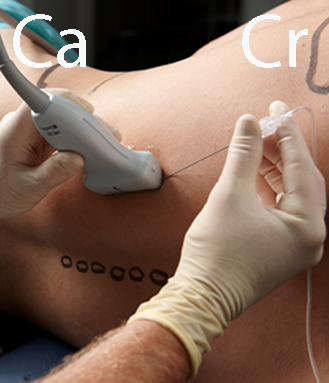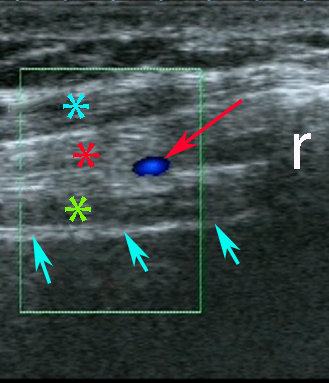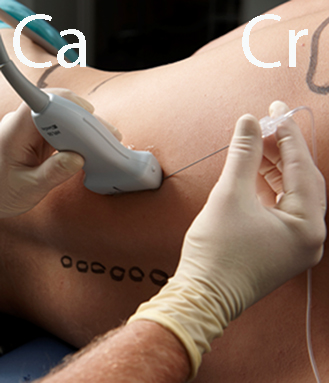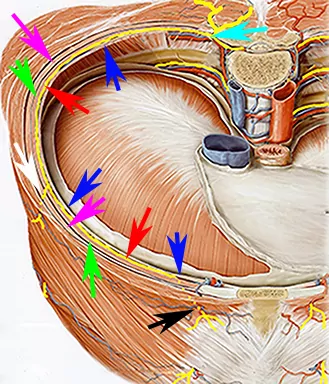– Place the patient sitting or in the lateral decubitus position
– Place the high-frequency linear probe in the parasagittal paravertebral plane approx. 10-15 cm from the sagittal midline. The lateral cutaneous branches branch off in the midaxillary line
– Visualize the target intercostal space (see next page)
– Insert the needle with in-plane technique from the cranial end of the probe
– Advance the needle to the fascial plane between the internal and the innermost intercostal muscles and inject 5 mL of local anaesthetic
– The needle shold be kept meticulously in-plane in order to avoid pneumothorax





